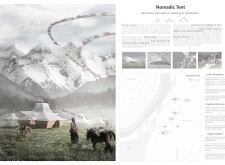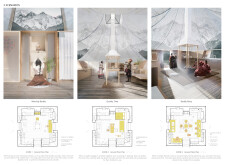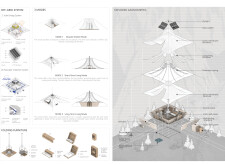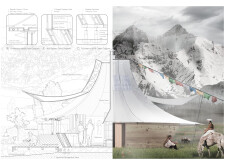5 key facts about this project
### Overview
The Nomadic Tent project is situated at the foothills of snow-covered mountains and is designed specifically for the Tibetan nomadic population. It serves to enhance sustainable living while respecting cultural heritage, addressing modern challenges and the evolving needs of community life. The project emphasizes adaptability and functionality, reflecting the essential aspects of a nomadic lifestyle.
### Spatial Flexibility and User Engagement
The interior of the tent is thoughtfully designed to accommodate diverse activities, including worship, dining, and social gatherings. This multifunctional approach allows for dynamic space utilization, catering to the varying roles and functions required by nomadic families. Each spatial arrangement is meticulously planned to facilitate interaction, ensuring that the environment adapts to the participants' needs.
### Material Sustainability and Environmental Adaptation
The project employs locally sourced materials that honor traditional practices, with a focus on durability and insulation. Key materials include wood for structural integrity, weather-resistant polyester canvas, and fire-resistant plywood to enhance safety. An off-grid energy system, featuring solar panels and rainwater collection, addresses the harsh climatic conditions and promotes self-sufficiency. Additionally, design elements are oriented to maximize natural light and ventilation while ensuring wind resistance, crucial for comfort in cold environments.






















































